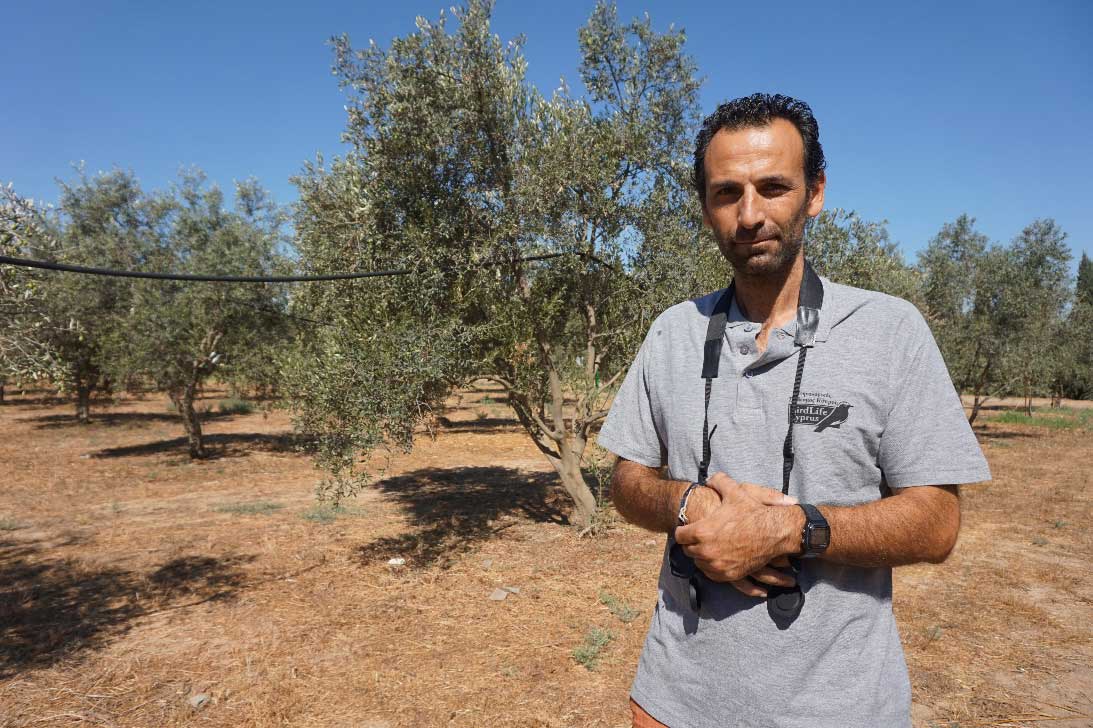Bee-eaters and beekeepers in Cyprus: a conflict with a solution
Guest blog by Tassos Shialis
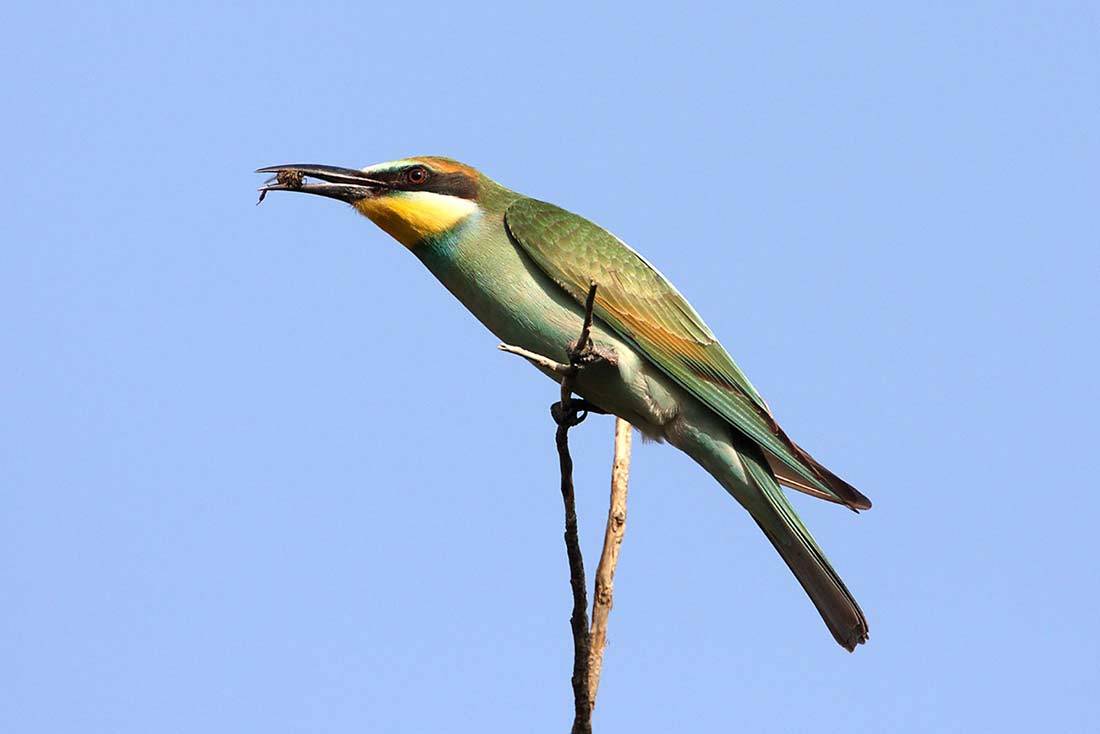
The problem
The migration of bee-eaters in spring and autumn through Cyprus is a wonderful event for nature lovers and bird watchers. At the same time, beekeepers in Cyprus are not happy with their arrival because they consider that bee-eaters, particularly in the autumn migration passage during August and September, cause damages to their beehives because they prey on bees.
The conflict between bee-eaters and beekeepers has been a recurrent problem for years in Cyprus, and many beekeepers shoot bee-eaters illegally near their beehives. In the past, the Republic of Cyprus had granted beekeepers licenses to use shotguns to intimidate and to scare away bee-eaters, however on many occasions this was abused and birds were illegally shot and killed instead.
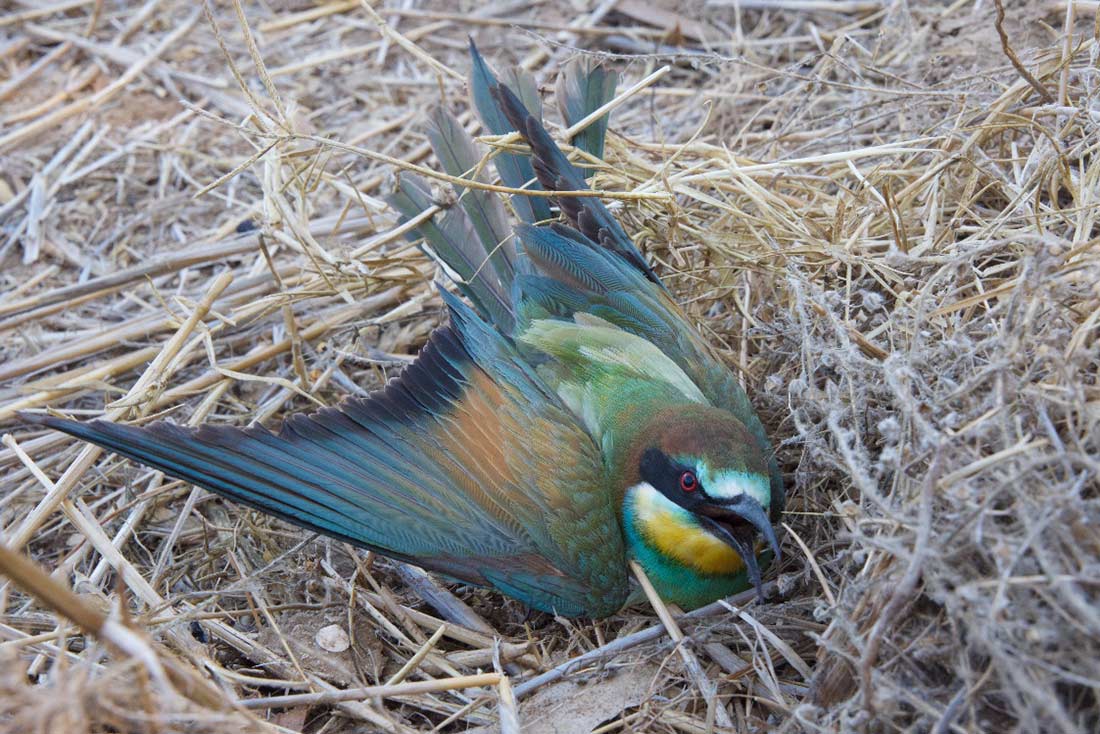
As part of BirdLife Cyprus efforts to find a solution to this issue, it organized back in 2011 a workshop with title ‘The impact of bee-eaters on bees and possible alternative solutions for the management of areas with bee hives’. BirdLife Cyprus invited experts from Greece and from Israel who had extensive experience of alternative methods of dealing with bee-eaters. The workshop was attended by more than 30 people, amongst which 10 beekeepers.
The European Bee-eater Merops apiaster
Bee-eaters are a migratory, insectivorous species that passes through Cyprus in spring and autumn in the order of thousand individuals. However, it tends to concentrate in specific areas that act as a ‘funnel’ during its migration and this is where the most conflict with beekeepers arise. The species has a stable population status in Europe and has been protected in Cyprus since 2003.
The species feeds on large insects, such as bees, bumblebees, hornets, wasps, ants, dragonflies, locusts, beetles etc. Bee-eaters chase these insects mainly by attacking them from elevated viewing standing points. With regards to nesting, it digs its nest on earthen slopes / riverbanks and nests in small colonies. In Cyprus, only a few dozen pairs nest every year.
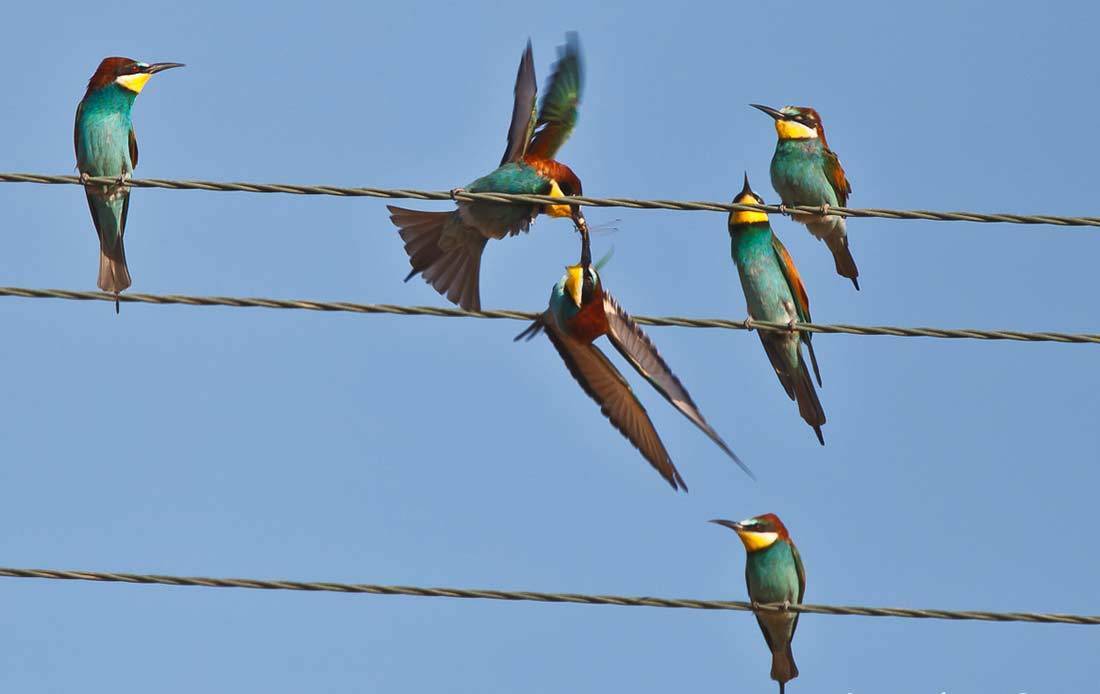
The species is protected under Cyprus (152(I)/2003) and European legislation (2009/147/EC). The legislation permits for the granting of derogations but this can only take place when there is lack of satisfactory alternatives and only for specific reasons, and must be strictly controlled and applied in a targeted manner.
Myths and realities
The bee-eater is an insectivorous species that eats many other insects that are harmful to agriculture and beekeeping, e.g. hornets, wasps, locusts. In reality, a bee-eater will prefer larger, slow moving and stingless insects (Cramp 1999, Fry 1983). In general, hive bees are food for the bee-eaters not because they prefer them exclusively but because they are in large abundance and often access to them is very easy. In reality, a beehive could also benefit from a bee-eater as it feeds on its enemies like hornets and wasps, which are damaging to bee-hives as they predate on bees.
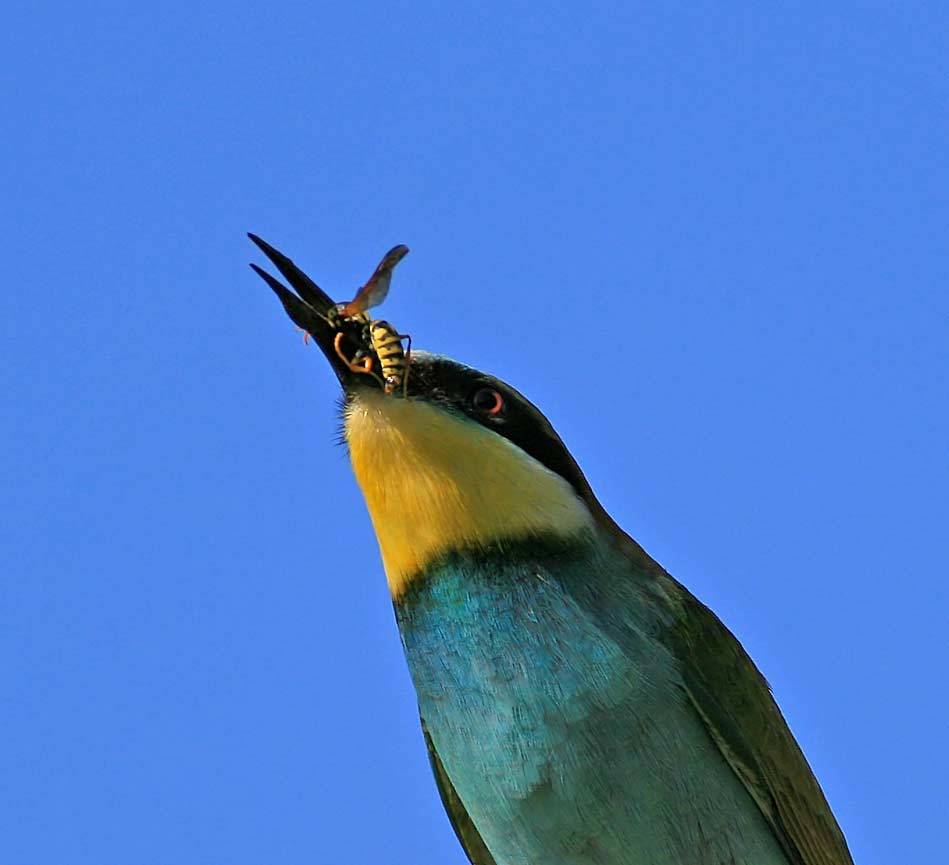
A study undertaken in Libya (Alfallah et al. 2010) showed that bee-eaters are not the main obstacle that stops bees from coming out of the hive for search of food, as many beekeepers claim and blame the birds for, but rather other factors such as food availability and weather conditions. Another study undertaken in Spain (Moreno-Opo et al. 2018) showed that bee-eater activity negatively correlated to honey bee activity; however, there were no negative effects on the survival and viability of the hives. More research is needed regarding this aspect, however it is clear that various parameters need to be accounted for and bee-eaters do not affect the overall survival of beehives.
Moreover, the shooting of bee-eaters is ineffective, as well as wrong and illegal in Cyprus, as a measure and can have the opposite effect because the bees rush to the killed bee-eater and sting the fallen bird, hence resulting in more bees dying.
The solution: measures to deter bee-eaters
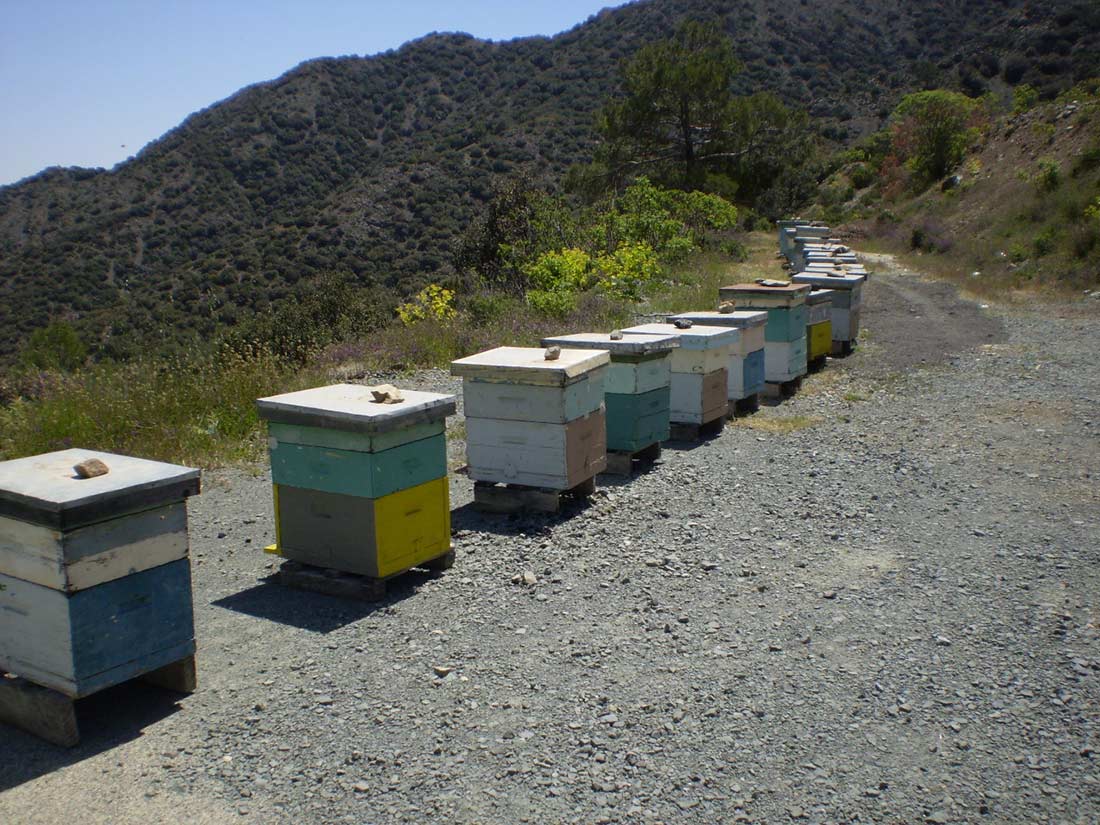
Various measures can be applied to deter bee-eaters from beehive locations:
- using reflective bands and balloons, which reflect the light, and which should surround the area where the beehives are located,
- using noise canons or bird alarm calls,
- using robotic falcons,
- encouraging raptors to nest nearby, e.g. kestrels in nestboxes (more important for spring than autumn), and
- the correct placement of beehives. This is a crucial aspect. Ideally hives should be more than 200m away from perches like wires, or leafless branches on which bee-eaters can perch before diving to catch the bees or perch to remove the sting. Another consideration would be to place beehives under bushes [bee-eaters are perch and dive species, so not placing hives near suitable perches would really discourage them].
Overall experts and local experience has shown that a combination of the abovementioned methods is better than using just one, but an essential requirement is good will and willingness to try these new methods.
References
- Alfallah HM, Alfituri M. & Hmuda M. (2010) “The impact of bee eater on the behavior of honey bee during foraging”. J.Plant Prot and Path, Mansoura University 12: 1023-1034.
- Cramp,D.C. (1999) “The birds and the bees: Bee-eaters: Friend or Foe”. American Bee Journal 139: 543-545.
- Fry C.H. (1983) “Honeybee predation by bee eaters, with economic considerations”. Bee World 64: 65-78.
- Moreno-Opo, R., Núñez, J.C. & Pina, M. European bee-eaters (Merops apiaster) and apiculture: understanding their interactions and the usefulness of nonlethal techniques to prevent damage at apiaries. European Journal of Wildlife Research 64, 55 (2018) – https://link.springer.com/article/10.1007/s10344-018-1215-9#citeas.
Tassos Shialis is the Campaigns Coordinator for BirdLife Cyprus. He has been campaigning against the illegal killing and trapping of migratory birds since 2011, when he started at BirdLife.
